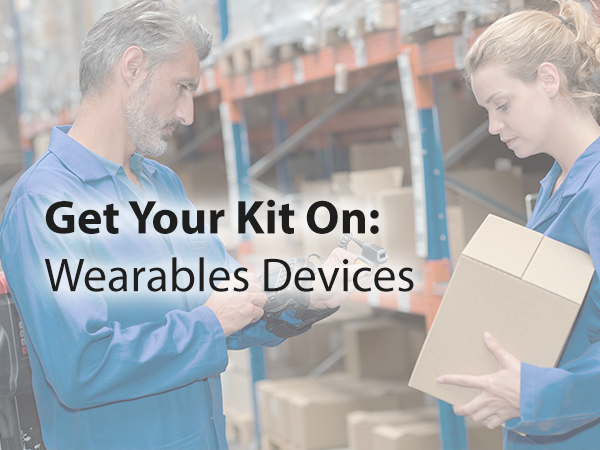Wearable devices make undertaking warehouse tasks easier. All manner of wearable technology is available: headsets with microphones for voice picking; computers for receiving instructions and data entry; and body-worn scanners for logging items when picking or undertaking cycle counts and stock checks.
How do wearable devices differ from standard rugged hardware?
Wearable devices themselves are typically rugged, so that they can stand up to the demands of a warehouse environment. They are built to withstand knocks and scrapes and are dust-proof too. They are designed to work in ambient temperatures just as well as in cold or sub-zero conditions.
The main difference is in the name though. They are wearable. Allowing operatives to work hands-free, computers can be worn on the waist or forearm, and ring scanners can be worn on the fingers. They are light but durable, and as they are typically worn all day, they are designed to be comfortable.
When are wearable devices most useful?
Wearables work for almost any warehouse situation. But they are particularly valuable in certain circumstances. For example, where it requires both hands to pick your goods, being able to operate hands-free is an obvious advantage.
Equally, where there is a large volume of orders, or where short delivery times are offered, hands-free operation speeds up picking in the warehouse. This means that workers can get large numbers of orders out on time.
The benefits of using wearable devices
Wearing your devices rather than holding or carrying them is more convenient. Hands-free working allows staff to focus more keenly on the task at hand and gives them a greater range of motion. There are no distractions from picking up and putting down a scanner, or from juggling a scanner with a handheld terminal.
Wearing devices rather than picking them up and putting them down gives workers much better mobility. In turn, this makes them more productive. Zebra Technologies estimates that with wearable devices, productivity is increased by 15%. Wearable devices also offer an increased accuracy over paper-based solutions, and Zebra says they even generate 39% fewer errors than speech-only wearables.
What training is required for wearable devices?
Little training is required for the use of wearable devices.
The Zebra devices from Renovotec that Balloon recommends include the arm-worn WT6000 Wearable Computer and the RS6000 Bluetooth Ring Scanner. Each of these is particularly easy to use. They are built on Android technology, so have a less steep learning curve than many devices. And they are simple to operate, requiring very minimal training.
If you would like to find out more about the range of wearable technology and other hardware that we recommend, please call us on 020 8819 9071 or get in touch.
